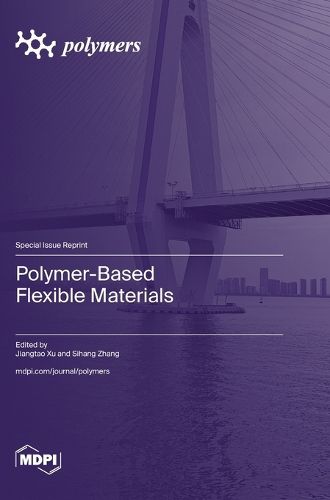Readings Newsletter
Become a Readings Member to make your shopping experience even easier.
Sign in or sign up for free!
You’re not far away from qualifying for FREE standard shipping within Australia
You’ve qualified for FREE standard shipping within Australia
The cart is loading…






This title is printed to order. This book may have been self-published. If so, we cannot guarantee the quality of the content. In the main most books will have gone through the editing process however some may not. We therefore suggest that you be aware of this before ordering this book. If in doubt check either the author or publisher’s details as we are unable to accept any returns unless they are faulty. Please contact us if you have any questions.
Compared to traditional flexible materials, such as metal-based, ceramic-based, and glass-based materials, polymer-based flexible materials have various advantages including low density, easy processing, excellent flexibility, and good environmental stability. Over the past few decades, polymer-based flexible materials have received significant attention due to the rapid development of the electronic industry, medical treatment, health, and other fields. For instance, flexible electronic technology shows great potential for reshaping the lives of human beings, but the bottleneck of flexible electronic technology is the availability of flexible substrates or flexible conductive materials, which can be resolved by modifying or doping polymer-based flexible materials. Moreover, it is possible to synthesize new polymer-based flexible materials or modify them for different purposes to endow them with corresponding functionality. This reprint presents a collection of research papers, communications, and review articles on the latest advances in the fields of synthesis, characterization, and the application of polymer-based flexible materials. The fields that will be discussed include: synthesis (organic elastomers, conductive polymers, and flexible organic networks); structural characterization; modeling; and applications (i.e., sensor, energy harvesting, energy storage, electromagnetic shielding, and biomedical).
$9.00 standard shipping within Australia
FREE standard shipping within Australia for orders over $100.00
Express & International shipping calculated at checkout
This title is printed to order. This book may have been self-published. If so, we cannot guarantee the quality of the content. In the main most books will have gone through the editing process however some may not. We therefore suggest that you be aware of this before ordering this book. If in doubt check either the author or publisher’s details as we are unable to accept any returns unless they are faulty. Please contact us if you have any questions.
Compared to traditional flexible materials, such as metal-based, ceramic-based, and glass-based materials, polymer-based flexible materials have various advantages including low density, easy processing, excellent flexibility, and good environmental stability. Over the past few decades, polymer-based flexible materials have received significant attention due to the rapid development of the electronic industry, medical treatment, health, and other fields. For instance, flexible electronic technology shows great potential for reshaping the lives of human beings, but the bottleneck of flexible electronic technology is the availability of flexible substrates or flexible conductive materials, which can be resolved by modifying or doping polymer-based flexible materials. Moreover, it is possible to synthesize new polymer-based flexible materials or modify them for different purposes to endow them with corresponding functionality. This reprint presents a collection of research papers, communications, and review articles on the latest advances in the fields of synthesis, characterization, and the application of polymer-based flexible materials. The fields that will be discussed include: synthesis (organic elastomers, conductive polymers, and flexible organic networks); structural characterization; modeling; and applications (i.e., sensor, energy harvesting, energy storage, electromagnetic shielding, and biomedical).